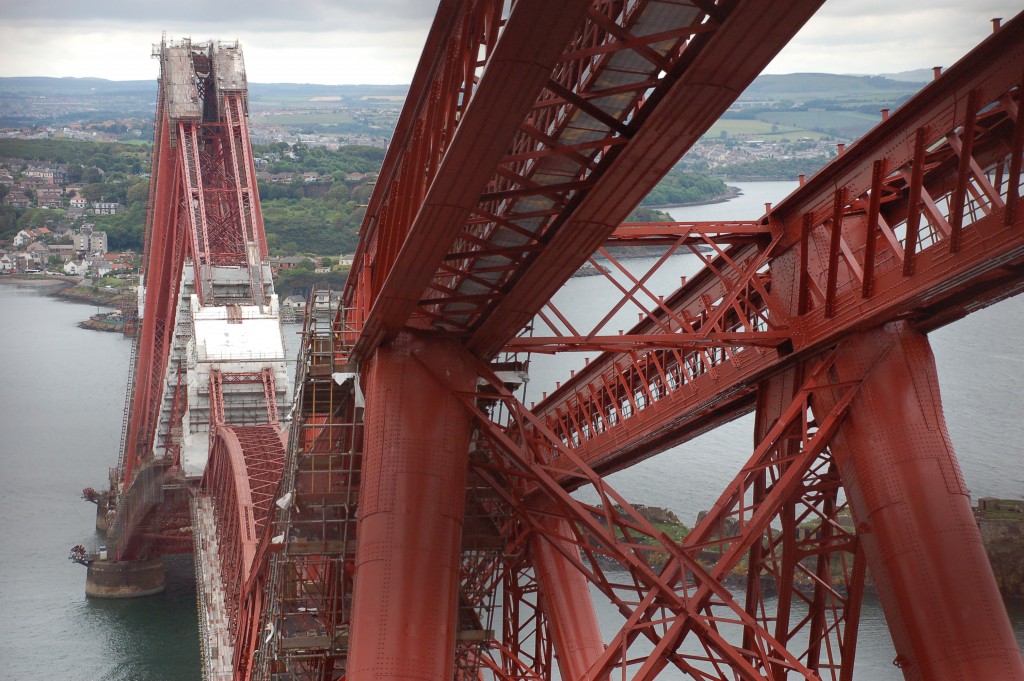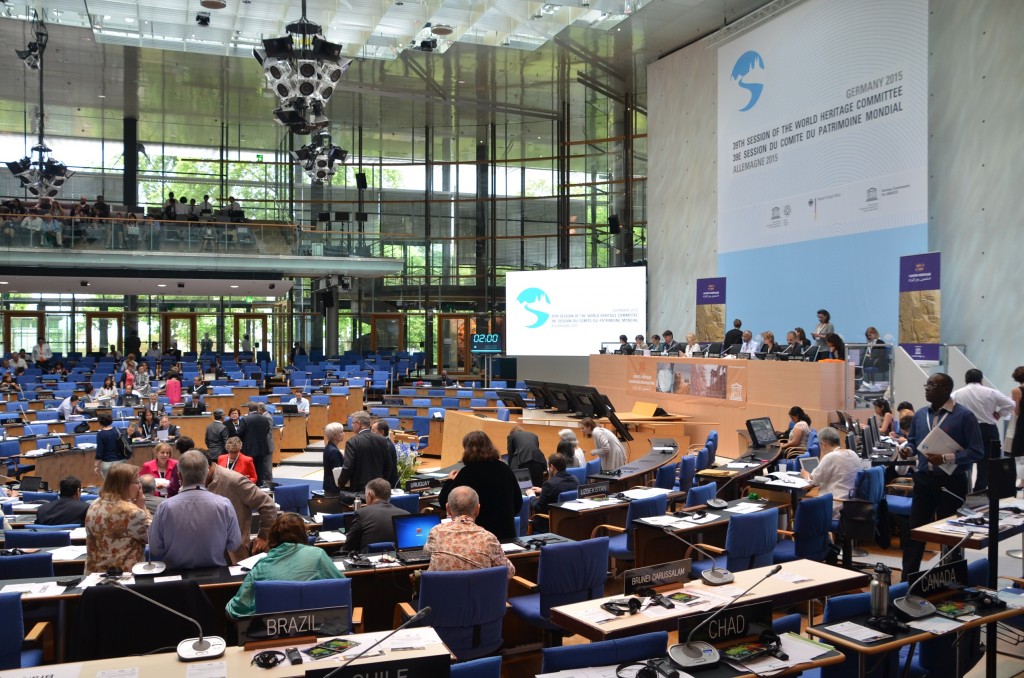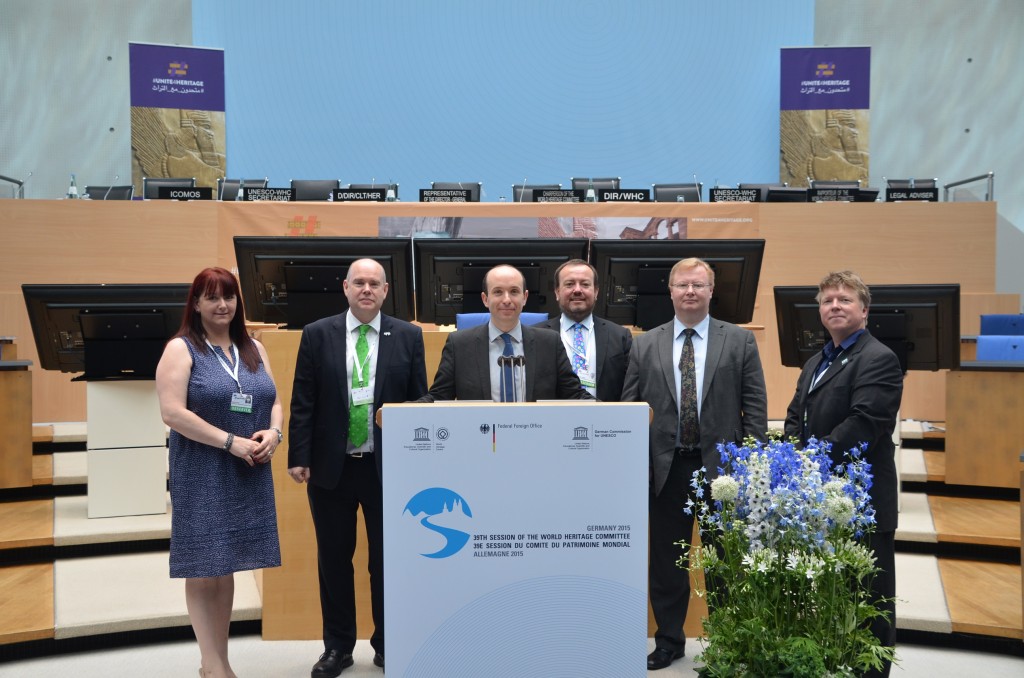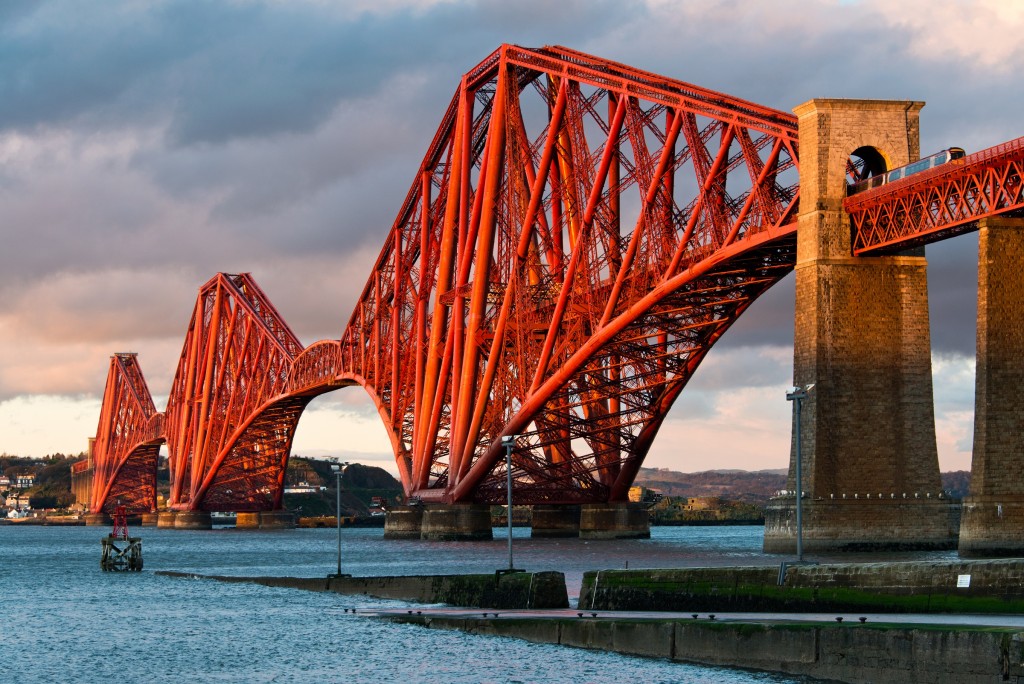One year ago today, the Forth Bridge became Scotland’s sixth Unesco World Heritage Site!
When the iconic railway bridge first made it onto the UK’s ‘Tentative List’ of World Heritage candidate sites back in 2011, we could not have anticipated that we would be chosen to go forward first, and that our journey towards inscription would be so rapid. Its’ been a little like an express train – high-speed and fewer stops than expected.
At the outset, the job was made a lot easier by the fact that, over the previous twelve years, Network Rail had completed an extraordinary restoration project, removing the original lead-based paint and applying a new coating system developed for the offshore oil and gas industry. As a result, the Bridge has probably never looked so good.

Without the extraordinary Forth Bridge restoration project by Network Rail, the World Heritage nomination would have been impossible
How to nominate a bridge
UNESCO demands that all World Heritage nominations comply with a standard template. In practice, this meant preparing a dossier in two parts. The first is the ‘Nomination Document’, the purpose of which is to demonstrate Outstanding Universal Value (OUV) using defined criteria. The second is the ‘Management Plan’, which demonstrates that you have the people, resources and planning systems in place to protect and promote your candidate site.
Our dossier was completed on time by the Industrial Heritage Team at Historic Scotland with the help of our partners in the Forth Bridges Forum, and was submitted to UNESCO on 20th January 2014. A ‘Technical Evaluation Mission’ followed in October, after which it was given the green light to be considered by the World Heritage Committee at its meeting on 5 July 2015.

View of the former parliament building from the UK delegation’s bunker. The 21 current World Heritage Committee members occupy the centre of the chamber, with ordinary members distributed around its periphery
We were immensely fortunate to be able to attend the event and defend our nomination, a process which took place within the magnificent former West German Parliament in Bonn.
This turned out to be an extraordinary experience – UNESCO is, of course, a branch of the UN, and to be involved in the event as part of the UK Delegation was a great honour. We were delighted when the Committee approved our nomination, and all the more so because it was praised for its high-quality presentation, and in particular, its clarity and brevity.

The UK delegation supporting the Forth Bridge World Heritage nomination, which includes Scottish Government minister, Marco Biagi, who made the acceptance speech and thanked the Committee
What comes next
Soon, however, we discovered that becoming a World Heritage site is only the beginning.
Now, we must make the most of the inscription. We are hoping for a boost in sustainable tourism as well as science and engineering education in particular. At the same time we’ll have to focus on minimising any negative pressures – like excessive traffic – that might ensue as a consequence of becoming a World Heritage Site.
This is where the Management Plan comes in. On our return from Germany, we created a ‘Forth Bridge World Heritage Management Group’, the function of which is to take forward the actions outlined in the Management Plan. UNESCO expects this of us because it is the best way of helping us work with our partners to ensure that our newest World Heritage site can bring significant benefits to the people of Scotland and beyond.
The journey therefore continues…
You can find out more about our progress at http://www.forth-bridges.co.uk/forth-bridge.html

